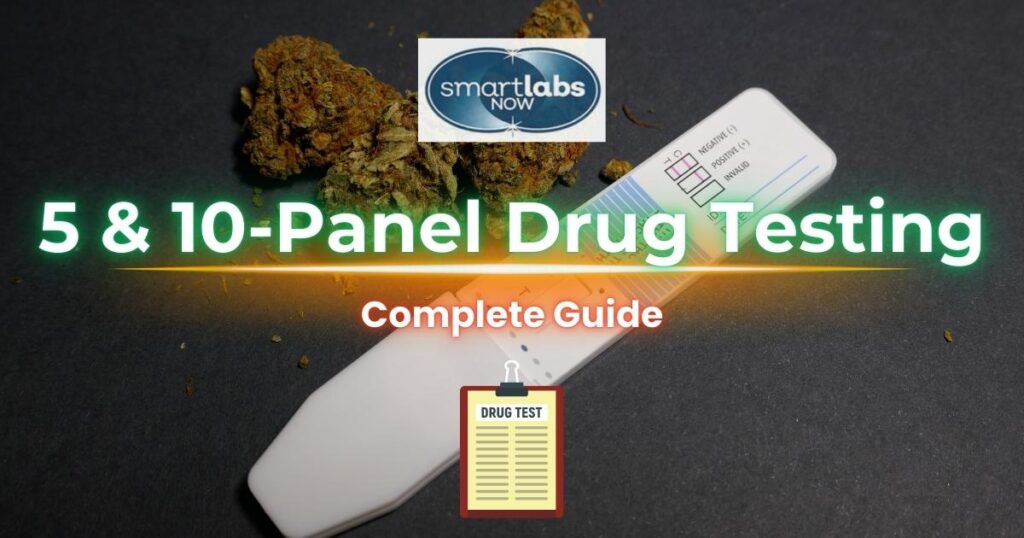
Drug testing has become a key component of workplace safety and compliance across industries. In Portland, OR, the wider US, and elsewhere, 5-panel and 10-panel drug tests are commonly used to ensure employees maintain a safe, drug-free work environment.
Understanding these tests can help potential test-takers know what to expect, interpret results accurately, and be informed about the process.
In this guide, we’ll explore the details, procedures, substances tested, and legal aspects associated with both 5-panel and 10-panel drug tests.
If you want to book or learn more about scheduling holistic drug screening for yourself or your organization, register here 🙂:
Employers, schools, and government organizations use drug tests to screen individuals for illegal or controlled substances. People who are conscious of their health can even book them independently.
Both 5-panel and 10-panel drug tests serve as critical tools for pre-employment screening, routine workplace testing, and recovery monitoring. These tests not only help prevent workplace accidents but also ensure that organizations comply with federal and industry-specific regulations.
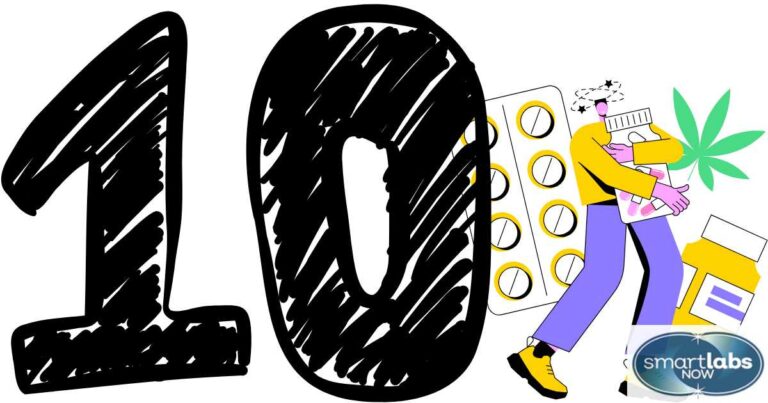
A 10-panel drug test is designed to identify ten specific substances, providing a comprehensive snapshot of an individual’s recent drug use. Employers, healthcare providers, and legal authorities (such as the Department of Transportation – DOT) frequently use this test for the following reasons:
The test is also part of pre-employment drug screenings to prevent substance abuse issues before they become workplace concerns. Background checks combined with drug testing offer a holistic approach to ensuring safe hiring practices.
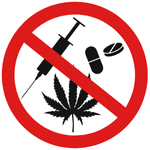
The 10-panel drug test screens for the following substances, covering both illegal drugs and prescription medications that may be misused:
Often used illicitly, these substances can lead to aggressive behavior and impaired decision-making.
Prescribed for anxiety and sleep disorders but may lead to misuse.
A highly addictive stimulant with severe health consequences.
Although marijuana is legal in some states, many employers still test for it due to its psychoactive effects.
Used in opioid addiction treatment but can be misused.
Includes drugs like heroin and prescription painkillers.
Known for causing hallucinations and violent behavior.
Prescription medications that can be dangerous if misused.

Detection times, or windows, vary based on the drug, the individual’s metabolism, and the type of test:
Factors affecting detection include the individual’s hydration level, drug purity, and metabolism rate. Drug metabolites, the byproducts of substances broken down in the body, are the primary indicators in these tests.
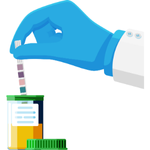
The 10-panel drug testing process includes several steps:
Instructions may include fasting or avoiding certain medications.
Urine is the standard sample type, collected under controlled conditions to prevent tampering.
The sample is shipped to a certified lab, where it undergoes urinalysis and further analysis for drug metabolites.
A Medical Review Officer (MRO) reviews and confirms results, especially if non-negative.

Drug test results are usually categorized as follows:
False positives can occur, often due to prescription drugs or over-the-counter medications. Confirmatory tests like gas chromatography-mass spectrometry (GC-MS) help verify positive results.

If the test results are positive, a certified MRO will contact the test-taker to discuss any legitimate prescription use. A second lab test can confirm the results, especially in cases of potential false positives.

Employers in Portland, Oregon State, and across the US must comply with federal laws, such as:
The ADA prohibits employment discrimination based on disability, which includes protections for individuals with a history of substance abuse who are in recovery or undergoing treatment. However, it does not protect current illegal drug users.
Under the ADA, employers must make reasonable accommodations for qualified individuals in recovery as long as it does not pose a direct threat to workplace safety. This law ensures that employees are not discriminated against solely for past substance use or addiction treatment.
This federal law requires certain employers, particularly those with federal contracts or grants, to establish and maintain a drug-free workplace. It mandates that these employers implement drug-free policies, conduct employee drug awareness programs, and take corrective action if employees engage in drug-related misconduct.
Although the act does not require employee drug testing, it encourages employers to create a workplace free from illegal drug use to comply with federal regulations.
Title VII prohibits employment discrimination based on race, color, religion, sex, or national origin.
In the context of drug testing, Title VII requires that drug testing policies be applied fairly and consistently to all employees without discriminatory intent or impact. Employers must ensure that testing does not disproportionately target certain groups and must accommodate religious practices where possible, so long as it does not interfere with legitimate safety concerns.
The FCRA regulates how employers use background checks, including drug test reports, in employment decisions. It mandates that employers must inform and obtain written consent from applicants or employees before conducting a background check or drug test through a third-party service.
If a test yields unfavorable results that may impact employment, the FCRA requires the employer to provide a copy of the report and a summary of rights before taking adverse action, ensuring transparency and fairness in employment decisions.
The FMLA provides eligible employees with up to 12 weeks of unpaid, job-protected leave for specific family and medical reasons, including treatment for serious health conditions, which could include substance abuse treatment. However, FMLA protections do not extend to absences due to substance abuse itself, only to leave for treatment, thereby supporting employees in seeking recovery without the fear of job loss.
The NLRA protects employees’ rights to collective bargaining and concerted activities. When it comes to drug testing policies, employers in unionized workplaces must negotiate drug testing procedures with the union. Even in non-union settings, the NLRA allows employees to discuss and address concerns about drug testing policies collectively, ensuring that employees have a voice in workplace decisions that impact them.
Post-incident evaluations are drug tests conducted after a workplace accident or incident, especially if the incident resulted in injury or property damage. The goal is to determine whether drug or alcohol use may have been a contributing factor. This type of evaluation helps employers maintain a safe workplace by identifying substance abuse issues that could lead to recurring safety hazards.
Random testing involves selecting employees at random for drug testing, often as part of an ongoing program to discourage drug use and promote workplace safety. It is commonly used in safety-sensitive industries, such as transportation and construction, and is often mandated by federal regulations for certain roles. The screening must be conducted impartially and consistently to comply with employment law.
Drug testing laws vary significantly by state, and employers must comply with specific state regulations regarding how and when drug testing can be performed. Some states have strict guidelines on drug testing practices, including conditions for pre-employment, post-incident, and random testing and restrictions on testing for substances like marijuana, which is legal in some states.
Employers should be familiar with state laws to ensure compliance and to respect employee rights under local jurisdiction.
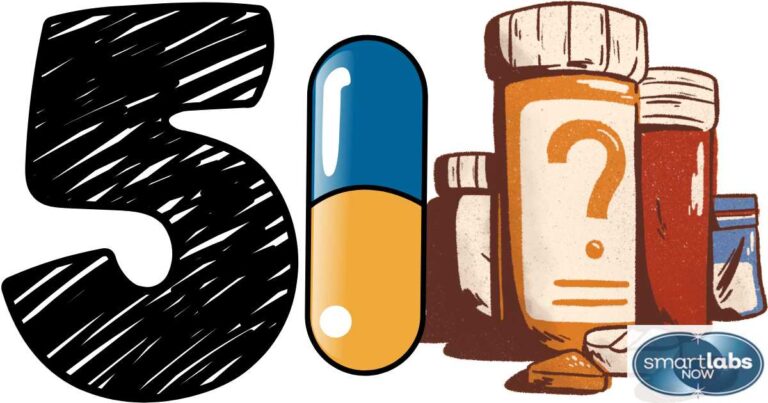
The 5-panel drug test is a simpler version commonly used by employers and federal agencies. It screens for five substances:
The Department of Transportation (DOT) mandates 5-panel testing for its employees, and it’s the standard in most federal workplace guidelines.

The 5-panel test primarily uses urine samples, but detection times vary depending on sample type.
Chronic users may have longer detection times due to metabolite build-up in their system.

Preparation for a 5-panel test generally involves avoiding certain medications. The sample collection is straightforward, followed by analysis at a lab. Results are typically delivered within days.

Results interpretation includes:
As with 10-Panel Testing, the MRO reviews and confirms non-negative results. Prescription drug verification can explain some non-negative results.

Federal laws, including the Civil Rights Act and ADA, govern workplace drug testing practices. Oregon’s state-specific cannabis laws may impact THC testing restrictions, especially where marijuana is legal. Employers should be aware of these regulations to avoid discrimination lawsuits.

Results are confidential and shared directly with the employer. For a positive result, the employee may face disciplinary action, depending on company policies and whether the result stems from prescribed medications.
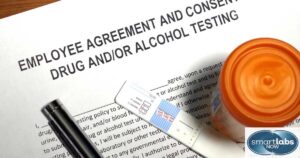
Other options beyond the 5 and 10-panel tests include:
Employers may opt for DOT-certified or standards-upholding labs like ours 🤓 or work with MROs to ensure the integrity of the testing process.
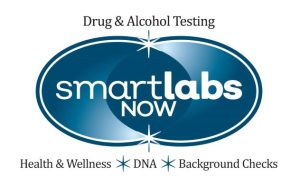
Smart Labs Now offers reliable, confidential 5-panel and 10-panel drug screenings for individuals and businesses in Portland.
Choose between convenient on-site testing at your address or in-lab testing to fit your schedule.
Protect your workplace and prioritize safety with accurate drug testing solutions tailored to your needs 🙌.
Please consult your primary care physician before engaging with any pharmaceutical, natural substances, or activity regimens mentioned or prescribed in this post. Smart Labs Now is not responsible for health or life outcomes based on the information or recommendations provided. This account does not serve as a substitute for professional medical advice/help.